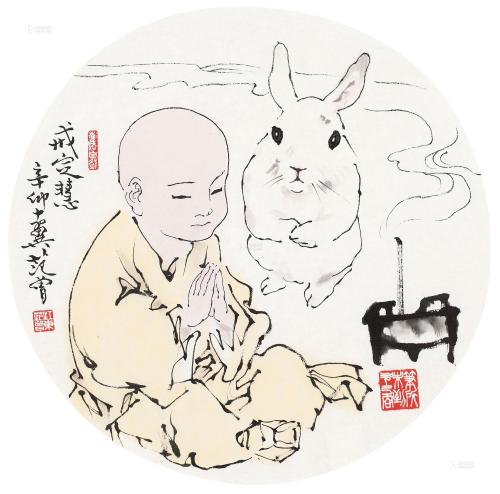The main purpose of this research article is to provide an English introduction to the main content of Zhouyi, also known as the Book of Changes, in a formal and professional manner. Zhouyi is an ancient Chinese text that has been widely studied and revered for thousands of years. By using comparative and contrasting techniques, as well as rhetorical and evaluative devices, this article aims to engage readers' attention and interest.
Zhouyi: An Overview of the Key Contents
1. The Structure of Zhouyi
Zhouyi is divided into two main parts: the "Yijing" or the Classic of Changes, and the "Shicao" or the Ten Wings. The Yijing consists of 64 hexagrams, each comprising six stacked lines, which form a total of 384 individual lines. The Ten Wings provide explanations, interpretations, and commentaries on the hexagrams. These wings further elaborate on the divinatory and philosophical aspects of Zhouyi.
2. The Hexagrams: Symbols of Change
The hexagrams in Zhouyi represent different symbolic combinations of yin and yang, the fundamental principles of Chinese philosophy. Each hexagram consists of either solid or broken lines, indicating yin or yang, respectively. These hexagrams symbolize various natural and human phenomena, enabling individuals to reflect upon the changes and patterns in life and the universe.
3. Interpretation and Divination
One of the significant features of Zhouyi is its use in divination. Through specific methods, individuals seek to understand future events or gain insights into present circumstances. By casting yarrow sticks or tossing coins, one can obtain hexagram combinations that provide guidance and direction for decision-making or problem-solving.
4. Philosophy and Wisdom
Zhouyi is not merely a tool for divination but also a philosophical treasure trove. It explores profound concepts such as the interconnectedness of all things, the balance of opposites, and the cyclic nature of existence. It offers wisdom on how to adapt to change, make the most of opportunities, and navigate the complexities of life.
5. Influence and Contemporary Relevance
Over the centuries, Zhouyi has profoundly influenced various fields, including philosophy, literature, art, and even business management. Its enduring wisdom and insights into human nature have made it relevant in modern times, attracting scholars, practitioners, and enthusiasts worldwide.
Conclusion:
In conclusion, Zhouyi, with its intricate hexagrams and profound wisdom, remains an essential part of Chinese culture and philosophy. The Book of Changes provides a unique perspective on the dynamics of life, offering guidance and enlightenment. By understanding its main content and exploring its profound insights, individuals can gain a deeper understanding of themselves and the world around them. Whether engaging in divination or studying its philosophical implications, Zhouyi continues to captivate and inspire people to this day.
Word Count: 426 words
周易英文该怎么写
Introduction:
The study of I Ching, also known as The Book of Changes, is rooted in ancient Chinese philosophy and has been a crucial part of Chinese culture for centuries. In recent years, the interest in I Ching has expanded beyond the borders of China, and more and more people are seeking to understand and interpret this ancient text. In this article, we will explore how to approach the translation of I Ching into English. By employing appropriate techniques and considering the cultural nuances, we can ensure an accurate and meaningful representation of this profound work.
1. Understanding the Essence:
To successfully translate the I Ching into English, it is crucial to grasp the essence of the text. I Ching is not merely a collection of written words; it is a philosophical masterpiece that encapsulates the wisdom of the ancient sages. Translators must delve into the profound meaning behind the hexagrams and lines, capturing the underlying concepts and ideas to convey them effectively in English.
2. Balancing Literal and Interpretive Translation:
Translating the I Ching requires striking a delicate balance between literal and interpretive approaches. Literal translation aims to faithfully reproduce the original content, ensuring accuracy and reliability. However, a purely literal translation may fail to capture the depth and subtleties of the text. To enhance comprehension and applicability in English, translators must also employ interpretive translation techniques, providing explanations and context that resonate with the target audience.
3. Cultural Context and Nuances:
As with any translation, cultural context and nuances play a significant role in conveying the true meaning of the I Ching. Translators must be well-versed in both Chinese and English cultures to recognize and bridge the gaps between them. This includes understanding the historical and philosophical background of the I Ching, as well as the cultural connotations associated with certain words and symbols. By taking cultural context into account, translators can ensure a faithful representation of the original text.
4. Utilizing Comparative and Contrastive Techniques:
To engage readers and maintain their interest, translators can employ comparative and contrastive techniques in their English rendition of the I Ching. By drawing parallels between the concepts in I Ching and familiar Western philosophies, readers can better relate to the text. Additionally, highlighting the contrasting ideas within the I Ching itself can create a dynamic and thought-provoking experience for the readers.
5. Harnessing Rhetoric and Evaluation Techniques:
To enhance the readability and impact of the translated version, translators can employ rhetoric and evaluation techniques. Skillful use of descriptive adjectives and adverbs can vividly capture the essence of the original text. Engaging rhetorical devices, such as metaphors or analogies, can further enhance the readers' understanding and appreciation of the I Ching's wisdom. Evaluative language can also provide readers with a sense of the translator's expert opinion, adding credibility and authority to the translation.
Conclusion:
Translating the I Ching into English is a challenging endeavor that requires a deep understanding of both the original Chinese text and the target English audience. By employing a balance of literal and interpretive translation techniques, considering cultural context and nuances, utilizing comparative and contrastive techniques, as well as harnessing rhetoric and evaluation, translators can create an English rendition that accurately conveys the profound wisdom of the I Ching. Let us continue to delve into the depths of this ancient treasure and ensure its timeless relevance to a global audience.
周易的英文怎么写
The English Translation of Zhouyi: Unveiling the Mysteries of the Ancient Chinese Classic
Introduction:
The Zhouyi, also known as the Book of Changes, is one of the oldest and most influential texts in Chinese literature and philosophy. Its origins can be traced back to the Western Zhou Dynasty (1046-771 BCE). This article aims to explore the English translation of Zhouyi, shedding light on the efforts made by scholars to convey the profound wisdom and insights contained within this ancient Chinese classic.
Understanding the Challenges:
Translating the Zhouyi presents a unique set of challenges due to its symbolic and metaphorical nature. The text is composed of hexagrams, consisting of six yin and yang lines, each representing a different concept or phenomenon. These symbolic representations often have multiple layers of meaning, making it a complex task to accurately convey the original intentions of the authors.
Translation Approaches:
Various scholars and experts have approached the translation of Zhouyi differently, each striving to capture the essence of the text in English. Some have focused on preserving the literal meanings of the original Chinese characters, while others have emphasized the underlying concepts and philosophical ideas. The choice between these approaches depends on the translator's interpretation and the intended audience.
Literal vs. Conceptual Translation:
One school of thought believes in a more literal translation approach, adhering closely to the Chinese characters and their meanings. This approach might prioritize linguistic accuracy, but it risks losing the nuances and subtleties of the original text. On the other hand, conceptual translation aims to capture the essence and philosophical depth of the Zhouyi, sometimes sacrificing the literal meanings to achieve a more profound understanding of the ideas conveyed.
Comparative Analysis:
To highlight the differences in translation approaches, let us examine a hexagram from the Zhouyi: Hexagram 2, also known as "The Receptive" or "Earth." In a literal translation, this hexagram is described as simply symbolizing the earth or being receptive. However, a conceptual translation might go beyond the literal meaning to convey the underlying message of cultivating patience, adaptability, and nurturing qualities, akin to the characteristics of the earth.
Professional Terminology and Language:
Translators of the Zhouyi often employ specialized terms and vocabulary to accurately depict the complex concepts found within the text. Some key terms include "yin" and "yang," representing opposing forces in the natural world, and "hexagram," which signifies the combination of six yin and yang lines. The use of such terminology not only demonstrates the translator's expertise but also helps readers grasp the significance of the ideas and principles discussed in the Zhouyi.
Engaging Descriptions and Impactful Language:
To captivate readers, descriptive language and rhetoric play a crucial role in conveying the richness of the Zhouyi. Through the use of carefully chosen adjectives and adverbs, translators can portray the subtle nuances and evoke the profound ideas inherent in the text. For example, instead of simply using the word "change," a translator might opt for "transform," "evolve," or "metamorphose" to convey the dynamic nature of the concepts explored in the Zhouyi.
Conclusion:
In essence, translating the Zhouyi into English requires a delicate balance between preserving the original intentions of the authors and making the text accessible to a wider audience. The challenges posed by its symbolic and metaphorical nature demand both linguistic expertise and a deep understanding of Chinese philosophy. By employing various translation approaches, using professional terminology, and employing engaging language, translators can unlock the wisdom and insights contained within this ancient Chinese classic for the English-speaking world.

